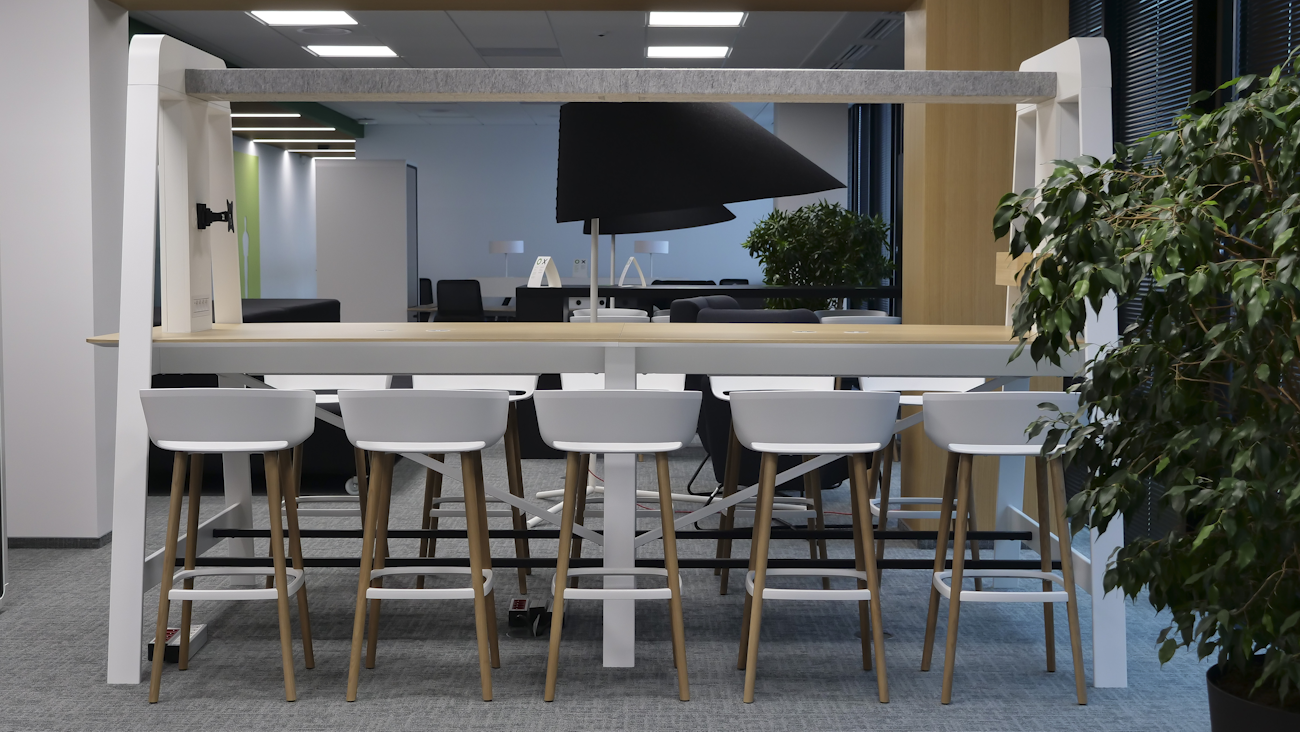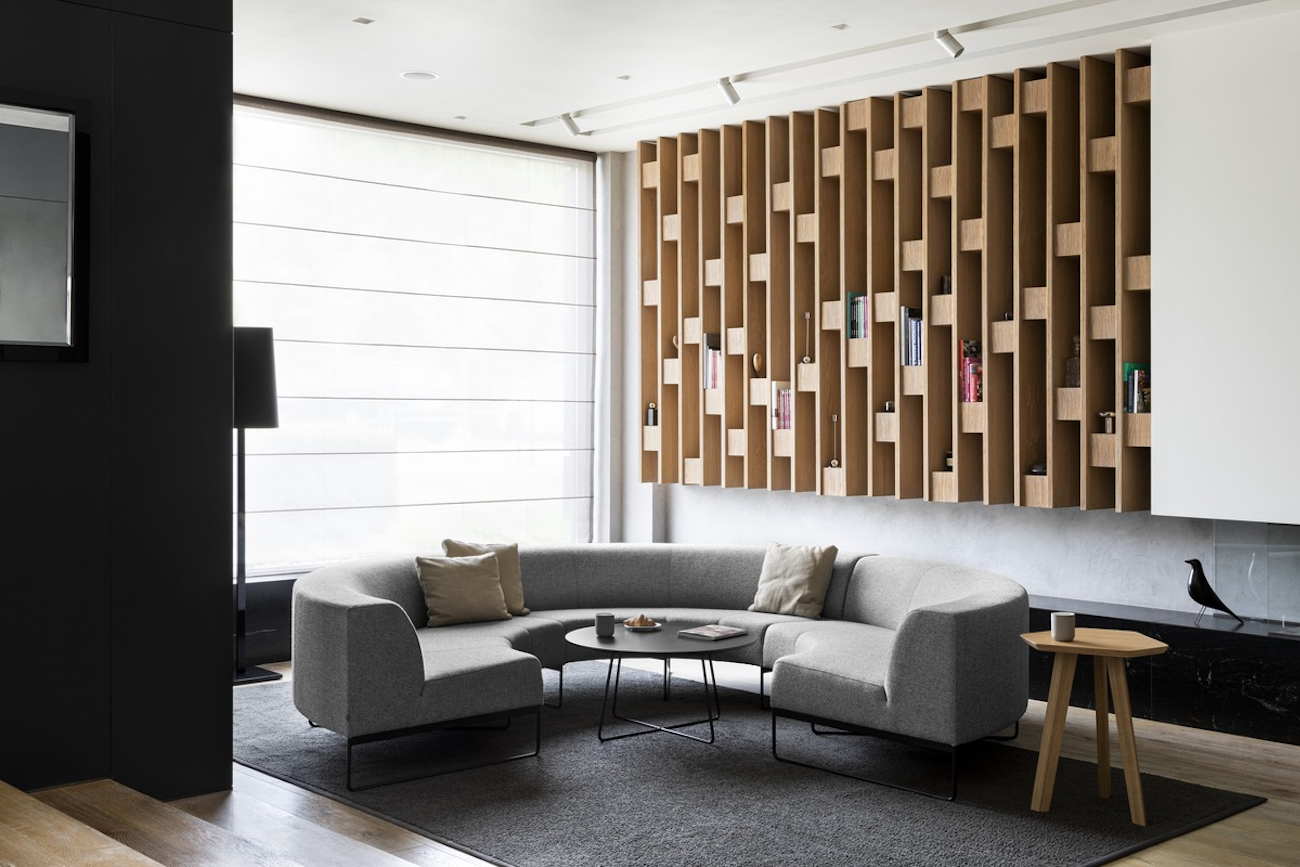Insights
5 most common myths of hybrid working debunked
_sfbrw.jpg?w=1300&q=90&auto=format&fit=crop&crop=edges,focalpoint&fm=png)
The traditional style of working has significantly changed since the pandemic. Previously, employees would be in the office 9 till 5 at their desks, but this dated working model is no more.
Executive leaders now have the challenge of redesigning their old workplace model to suit the new ‘human-centric’ hybrid work design that emphasises flexibility and empathy. Doing so will lead to employees feeling more empowered and increasing their productivity and engagement.
However, not everyone agrees with the new hybrid working model. There are many preconceived and unexamined notions like working from home leads to lower productivity, or that it subverts company culture and hinders innovation. Even Lord Alan Sugar had his say, calling those that worked from home “lazy” and that there was no way that people were working as hard and being as productive as they would when at a work location. So, what’s the truth?
In this article, we will be debunking the 5 most common myths of hybrid working.

Myth 1: Hybrid working hinders productivity
Let’s start with one of the biggest misconceptions of hybrid working – the notion that remote working hinders productivity. Many executives and managers doubt the productivity of employees who are working remotely.
However, it has been found that increased flexibility that comes with remote working actually drives productivity! In the Buffer State of Remote Work 2022 report, 44% of people said that working remotely helped them focus better, and 59% felt that not having to commute daily left them with more time to use productively. If that doesn’t say enough, according to a 2021 survey of global workers, employees who had access to remote work options were 75% more likely to report they were engaged on their work. In this section, we will let the stats speak for themselves.
Myth 2: Inclusion and belonging suffer when hybrid working
Another popular unfounded myth of hybrid workplaces is that employees feelings of inclusion and belonging suffer when working remotely. While it’s understandable this will be assumed as remote working can be seen as isolating and lonely, many surveys have found that the sense of belonging actually improved since the Covid-19 pandemic.
For example, Catalyst surveyed 7,487 employees across the globe and their data showed employees are 93% more likely to report often or always being included when working remotely. Glint employee survey also supports this and found that 66% of organisations had seen their belonging scores improve since covid-19 and that belonging strongly correlated to their employees overall happiness and success at work. So, there you have it.
To succeed when it comes to ensuring employees all feel included, make sure work assignments and recognition are fair and inclusive, examine how projects are assigned to individuals and keep a close eye on remote or hybrid team members and ensure they are getting the same access as in-office employees.
Myth 3: Hybrid working negatively impacts creativity and innovation
Some employers believe that the lack of people in the office will decrease conversation and therefore compromise innovation amongst employees. But if you have the right set up within your office, then creativity and innovation will not decrease, in fact - it will soar.
In the Catalyst survey, it was reported that employees within a hybrid working environment are 63% more likely to be often or always innovative. Similarly, there is even more data out there showing how workers experience 56% greater creativity and innovative thinking when working remotely.
The best designed hybrid working environments should offer employees areas where they can collaborate effectively, work together, and share ideas in a comfortable space. At Haiken, we have a variety of office furniture products that can be used to improve creativity and innovation in hybrid offices:

- Wright Cowork Desk: perfect for collaboration in hybrid working environments, the Wright Cowork Desk is not only height-adjustable but also side-adjustable. The side of the higher desks also have the option for a screen to be placed in order to easily share visuals with team members. By implementing the Wright Cowork Desk, employees will be able to share their thoughts and collaborate with ease.
- Scott Meeting Pod: this acoustic pod can house 2-4 people and is made from carefully selected materials that offer optimum sound absorption. It’s an equally practical solution to create a private space for collaboration in open plan office designs.
- SoundRoom: a comprehensive design combining innovative technology based on felt acoustic screens, with sound diffusing geometry, allowing workers to collaborate in peace. There is no better office furniture to inspire innovation and creativity in the hybrid workplace.
- Tritos: a collection designed with public buildings in mind, the Tritos can be combined into a circular shape and can be complemented with a table so that employees can sit comfortably and collaborate face-to-face.

Myth 4: Hybrid workspace models hinder corporate culture
There are many executive leaders who fear that the limited in-person contact as a result of the hybrid working model will hinder the company’s corporate culture. Luckily, this fear is unfounded. Even before the pandemic, many cultures lacked future fitness and were missing key attributes for digital success such as agility, speed, and autonomy in decision making.
Unlike the traditional working models, the hybrid office style of working actually has the ability to reinforce corporate culture, not hinder it. Remote and hybrid employees have reported more culture satisfaction than those in the office.
To make a successful hybrid working model, employers should first identify the cultural norms they want to promote amongst their employees, as well as the activities they wish to reinforce. Following that, plan measures to promote these behaviours in the hybrid model and create a common, shared purpose with employees. For example, organisations could promote team bonding activities like Team activity days, contests, etc to help encourage employee engagement and satisfaction within the company. Arranging such activities will help to increase corporate culture within the hybrid working model.

Myth 5: Hybrid working is not here to stay
Some leaders still believe that things will eventually revert back to how they were before the pandemic, with employees being in the office everyday 9-5 at their desks. However, the pandemic showed how traditional work assumptions were old-fashioned and unnecessarily limiting… So instead of moving backwards, companies should continue to move forward and improve?
If employers were to revert to the office-centric design, it’s said they could risk losing 39% of their workforce. But if they were to create a new model based on the hybrid environment, this will reduce fatigue by 44%, increase intent to stay by 45% and boost performance by 28%. Out of 2,206 people who responded to a recent wellbeing survey, 91% said that the hybrid model supported their wellbeing. Every business success depends on its people, so it’s important to listen to what they want and adapt if you can.
Proven boosted productivity, greater flexibility, and improved wellbeing all are a result of the hybrid working model and demonstrate the positives that come with hybrid offices when they are properly implemented.
Hybrid office solutions from Haiken
At Haiken, we provide a variety of office furniture solutions that can help make the hybrid working model a success for all and support the debunking of those myths out there!
If you need help adapting your workspace to the new hybrid model, contact our friendly office furniture consultants today and we will be happy to help you transform your workspace into one that is flexible and productive.
